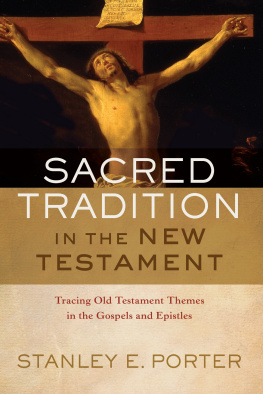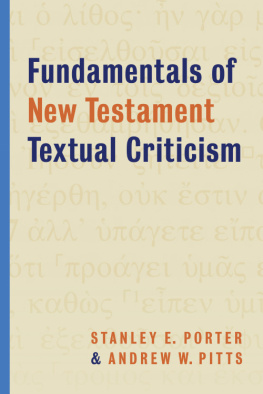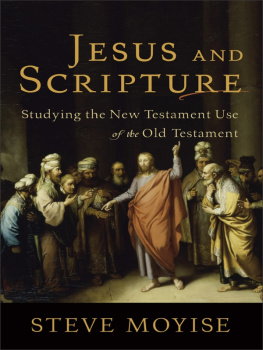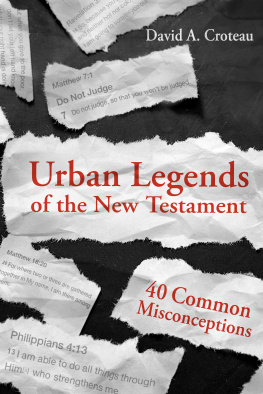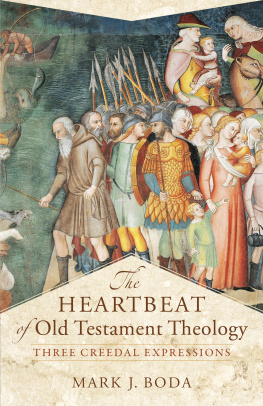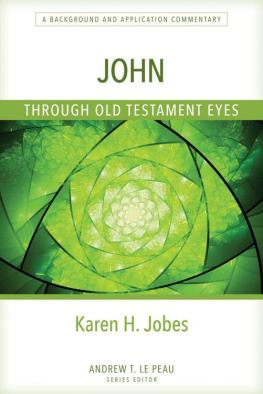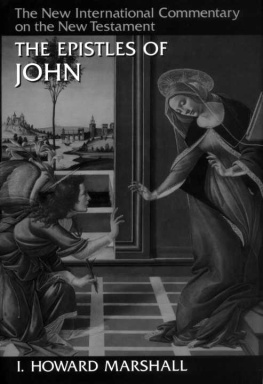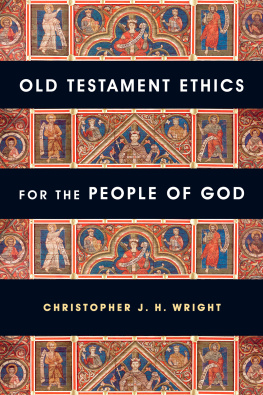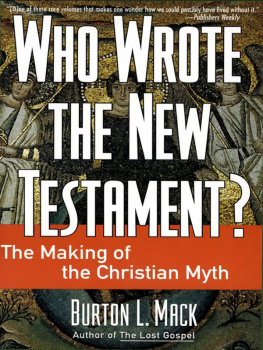1. Background to Discussion of Sacred Tradition
2. Method and Terminology in Discussion of Sacred Tradition
3. Daniel 7:13 and the Son of Man
4. Isaiah 4253 and the Suffering Servant
5. The Son of God and the Messiah and Jesus
6. Exodus 12 and the Passover Theme in John
7. Psalm 22 and the Passion of Jesus
8. Genesis 15:6 in Paul and James
9. Esau in Romans and Hebrews, Bryan R. Dyer
Preface
T he heart of this volume is five lectures that I was asked to give on how OT themes are developed in the NT, especially regarding Jesus and how he is conceived and presented. These five lectures were supplemented by a sixth lecture, given to the same audience two years later, which took material about Jesus as the basis for further NT thought. A seventh lecture was delivered to a different audience but on a related themehow sacred traditions (that is, traditions venerated by various groups), whether Jewish or Greek, are developed in the NT regarding Jesus and his identity. To these lectures were added two necessary preliminary methodological essays on how to approach such material and a final essay on a further OT tradition. As indicated, although the focus of all these lecturesnow become written essaysis the use, development, and interpretation of sacred tradition, a major subtheme that emerges in many, if not all, of them is that of who Jesus is, that is, Christology. The essays of this volume, therefore, are formed around this core set of lectures, now essays; they are not, and never were, simply a collection of random thoughts put to paper. As a result, I believe this volume provides a clear set of essays that explore how sacred tradition of various types is developed in the NT, often, though not entirely, for christological ends.
The original lectures that constitute this volume were delivered to a very receptive and highly appreciative audience in Richmond, on the southwest side of London, England. The group was called the Christians in Richmond, and these regular gatherings brought together Christians from various denominational backgroundsAnglican, to be sure, but also Roman Catholics, Methodists, and others, both conformists and nonconformiststo hear and respond to presentations on a variety of biblical and theological topics. I was asked to give an initial set of five lectures upon the recommendation of a colleague in the department where I had recently taken up the position of Professor of Theology and Head of the Department of Theology and Religious Studies of what is now Roehampton University (itself located on the southwest side of London). I must thank Mrs. Kay Davidson for the invitation to deliver these lectures, and her unceasing hospitality, as I, a recent arrival in the United Kingdom, developed some new and challenging ideas for an audience of welcoming listeners. As Kay told me, and as I confirmed, this was largely a lay audience. However, there was no sense in which I attempted or needed to dumb down the material that I delivered. This audience of roughly fifty or more people gathered each nightand sometimes the weather was inclementin order to be challenged and to respond to such a challenge with pertinent questions and further insights. I thoroughly enjoyed this engagement with the audience. Others must have found the experience useful as well: after the first years set of five lectures, I was invited back two years later to give a further lecture as part of a series with varied presenters. All six of these lectures are found in this volume, four of them published here for the first time.
In preparing and presenting these lectures, I did not hesitate to put forward a number of new and creative theological and exegetical ideas, nor did I hesitate to explore the range of available scholarship on these topics. I am pleased to note that some of the ideas that I put forward have been further developed by others. I of course did not put all of this at the forefront of the lectures, but tried to present them in a way that would be both winsome and instructive. I do not hesitate to say that I am sure I learned much more from the experience than did my attentive audience. These lectures gave me the occasion to explore some areas of long-standing interest that I had not had occasion to research as fully as I had wanted. They also gave me the opportunity to present my findings in a context that combined the need for rigorous thought with accessibility and clarity. I have tried to retain these features in the chapters presented here.
All six of the papers that I presented to the Christians in Richmond, as I disclosed above, focus on the use of sacred tradition within the NT. Most work in this area, which is all too easily categorized as describing the use of the OT in the NT, tends to focus on individual OT verses and how they are quoted and interpreted within the NT. I have not taken this approach. My approach to the use of sacred tradition tries to find more significant passages or themes within the OT and explore their use in the NT. As a result, including the six lectures that I presented over several years to the Christians in Richmond, the volume presents the following contents.
Part 1 consists of three previously published chapters, now thoroughly revised and edited into two chapters (1 and 2), on methodological questions regarding how the OT is appropriated in the NT. I dispute several recent trends in scholarship on this topic and propose new ways of dealing with various terminological and methodological issues. These chapters are a necessary starting point of this volume: they both clear the ground for my further discussion and define essential terminology for such a treatment.
Chapters 3 and 4 of part 2 are two of the original papers delivered to the Christians in Richmond, thoroughly revised in the light of subsequent thought and scholarship. Chapter 5 is a completely revised form of an invited paper delivered to the Council of Christians and Jews, Wimbledon and District Council. The body of this paperthough without its footnotes!was published (in a journal now virtually impossible to find), but the paper is presented here in an extensively revised and fully documented form.

